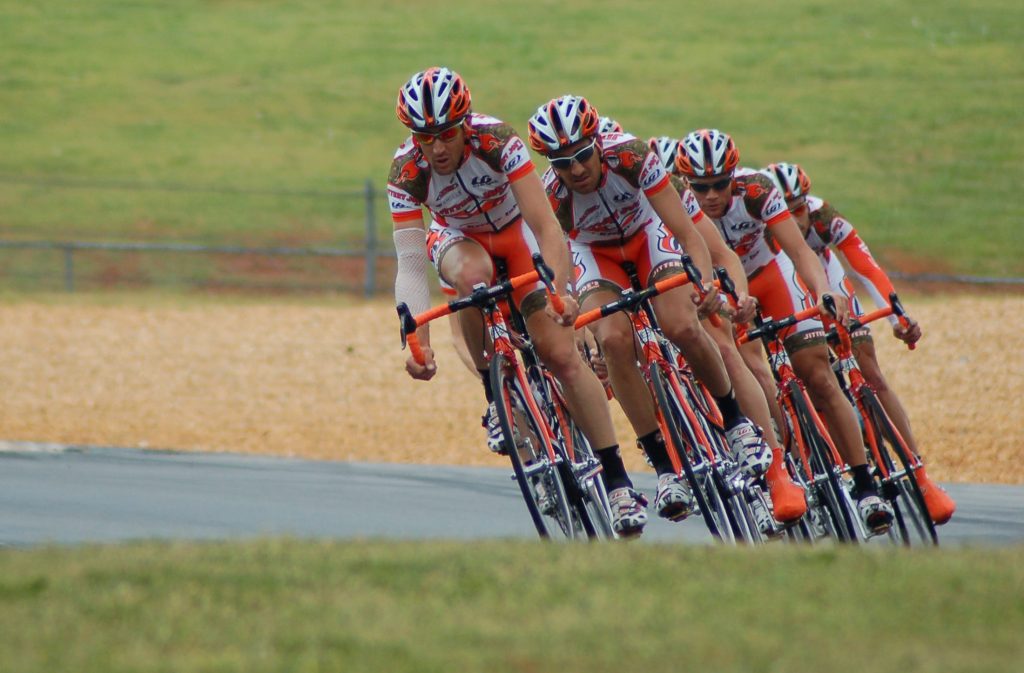Consider the worst-case scenario when it comes to racing. It’s easy to delude oneself into believing that it will never happen to you. You might even chuckle at danger when you narrowly escape a crash by the skin of your teeth. But pondering the “what ifs” should be a signal to hang up your cleats.
Safety In Elite Sports
Safety is of utmost importance in elite sports, and all potential risks should be addressed in advance. However, it should not fall upon the athletes to champion this cause.
In certain moments, sports transcend their individual fan bases and compel the entire world to pause, take a breath, and reflect. Nationality and team affiliations become irrelevant. Recent examples include Diego Maradona’s passing and Romain Grosjean’s harrowing F1 crash.
Grosjean’s Miraculous Survival
Grosjean’s crash at 220 kph into a steel barrier, followed by his car engulfed in flames, seemed like a death sentence. Yet, miraculously, 28 seconds later, he emerged with only minor hand burns, no fractures, and no concussion. This raises a crucial question: Is Formula 1 safer than cycling?
Many news outlets hailed Grosjean’s survival as a miracle. I respectfully disagree; his survival is a testament to prioritizing safety by the governing body and the engineering that safeguards athletes.
Contrasting Approaches: F1 and Cycling
Over the years, Formula 1 has experienced numerous fatalities, prompting the International Automobile Federation (FIA) to learn from each incident and implement regulations to enhance safety. This starkly contrasts with the world of cycling, where the Union Cycliste Internationale (UCI) appears to be slow in adopting similar measures to protect riders. This discrepancy begs the question: What will it take for the UCI to act decisively?
There are substantial differences between Formula 1 and cycling that make the former easier to predict and control. The longest lap in the 2020 Formula 1 calendar was just 7 km while cycling races like Milan-San Remo cover distances of up to 298 km. Formula 1 tracks are closed circuits, allowing for predictions of potential crash locations. They even deploy a safety car on the initial, treacherous lap. In contrast, cycling races take place on open roads, introducing variables like street furniture and the risk of stray vehicles entering the course.
Nevertheless, the fundamental premise of both sports remains the same: the first to cross the finish line wins. Both sports accept the inevitability of accidents during races. The distinction lies in how each sport addresses the safety of its participants after a crash occurs.
After Chris Froome’s terrifying 2018 crash, Sir Dave Brailsford suggested conducting an F1-style safety review, contemplating why cycling couldn’t progress in the same way Formula 1 has.
Safety Technology Comparison
When it comes to safety technology, cycling lags far behind Formula 1. UCI regulations on helmets lack specific requirements for advanced safety systems like MIPS (Multi-directional Impact Protection System). Formula 1 helmets are designed to be virtually bulletproof, emphasizing the protection of the brain.
The UCI imposes no minimum clothing standards, leaving riders vulnerable to road rash and fractures. Formula 1 suits, on the other hand, are equipped with advanced technology to withstand the aftermath of a crash and are fireproof.
The Need for Safety Provisions
While bikes in cycling are robust, there are limitations to their design that make it challenging to introduce safety features like the “halo” bar used in Formula 1 cars. The UCI does have a bike weight limit, but modern materials and technologies can safely reduce the weight.
In Formula 1, drivers sometimes criticize new safety measures, but their forward-thinking approach to safety ultimately saves lives. In cycling, it often falls upon the riders to push for safety improvements.
Cycling is undoubtedly a dangerous sport, and no one is advocating for the elimination of its challenges. Instead, there should be provisions in place to minimize the impact of potential errors, such as adding padding to dangerous corners or neutralizing races on treacherous roads.
Cycling can learn valuable lessons from other sports, especially regarding the diagnosis of injuries like concussions. Implementing safety measures that prioritize the well-being of riders is crucial.
Lastly, cycling should follow Formula 1’s example in not replaying crashes until the safety of the individual is confirmed. It’s essential to consider the emotions and anxiety that such replays can evoke for riders’ families and fans.
Safety is paramount, and it’s time for cycling to take bold steps to protect its athletes. True change might only come when the worst imaginable happens, but let’s hope it doesn’t come to that. Riders like me want to race carefree but also have the assurance that safety is a top priority.

